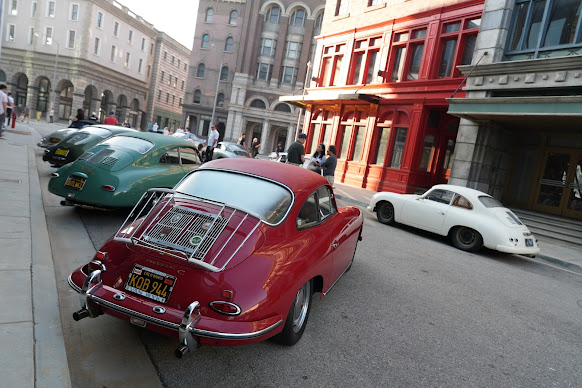INDY Autonomous Challenge - CES2025 - AI Drivers Race With Five Overtakes In Twenty Laps
The Indy Autonomous Challenge (IAC), a global leader in high-speed autonomy, returned to CES 2025 with groundbreaking developments, including the introduction of multicar racing and the future of physical AI. Held on January 9, 2025, at the Las Vegas Motor Speedway from 2-4 PM PST, the Autonomous Challenge at CES 2025 marked a significant milestone in the evolution of autonomous technologies, offering attendees an unparalleled view of AI's progress in high-speed motorsport.

|
| Anxious and ready to attempt a first-time multiple car autonomous trial in a 20 lap match. UNIMORE Racing No. 6 became the first winner of the Tier 3 structure challenge where multiple cars not only attempt to pass, but win against the four teams that threw their hats into the ring. Image Credit: Edmund Jenks (2025) |
A New Era of AI Racing: Multicar Showdown and Tiered Competitions
Building on its historic introduction of head-to-head autonomous racing at CES three years prior, the IAC achieved another milestone during CES 2025 with a multicar exhibition race. Teams ran 3-4 autonomous racecars simultaneously in a thrilling 20-lap format, demonstrating not only individual car performance but also the capability of AI systems to manage complex multi-agent interactions at high speed.
The event featured a progressive three-tiered structure that allowed teams at all experience levels to compete and push the boundaries of their AI Driver development:
Tier 1: Single-car time trials, where teams showcased the stability of their AI Drivers at extreme high speeds.
Tier 2: A two-car passing competition, designed to test strategic racing and AI adaptability in head-to-head scenarios.
Tier 3: The multicar racing event, where 3-4 racecars competed in an open racing format, challenging the limits of AI Driver multi-agent interaction and high-speed decision-making.

|
| AI Racing Tech (ART) No. 7 - a collaboration between University of California Berkeley, with University of Hawai’i (UH), University of California, San Diego (UCSD), & Carnegie Mellon University in a group photo celebrating their Tier 2 accomplishment of an on-track pass timed just before the Start Finish line (image below). Image Credit: Edmund Jenks (2025) |

|
| Tier 2 trials pass of Purdue AI Racing - Purdue University No. 2 by AI Racing Tech (ART) No. 7 just before the LVMS Start Finish line. Image Credit: Edmund Jenks (2025) |

|
| End of a very successful CES 2025 trial at LVMS for AI Racing Tech (ART) Autonomous Driver No. 7 in the Indy Autonomous Challenge. Image Credit: Edmund Jenks (2025) |
This structure provided a platform for progressive competition, ensuring all teams had the opportunity to demonstrate their advancements in autonomous racing.
New Teams and Exciting Partnerships
The IAC welcomed two new university teams, Indiana University and the California Institute of Technology, bringing the total number of participating teams to ten. These additions enriched the competition, expanding the global pool of talent and expertise working to advance high-speed autonomy on a shared AI and robotics platform.
In collaboration with the U.S. Defense Advanced Research Projects Agency (DARPA), the IAC served as an official test and evaluation platform to enhance AI training for autonomous systems. This initiative is part of DARPA’s Transfer Learning from Imprecise and Abstract Models to Autonomous Technologies (TIAMAT) program, which aims to bridge the “simulation to real” gap in AI development.

|
| Starlink communications from Elon Musk's SpaceX allows instantaneous 2-way inputs in this mobile AI world of the IU Luddy No. 10 when the car is on track. Image Credit: Edmund Jenks (2025) |
“The Indy Autonomous Challenge is truly leading the charge in the physical AI revolution,” said Paul Mitchell, President of the Indy Autonomous Challenge. “By pushing the limits of autonomous technology on the racetrack, we’re not just developing AI that can drive racecars - we’re creating systems with applications ranging from aviation to autonomous vehicles and robotics. The race at CES showcased cutting-edge innovation and highlighted what can be achieved when government, academia, and industry unite to tackle some of the biggest tech challenges of our time.”
We fully understand that AI autonomous racing will never really deeply connect with a Human fan-base as actual racing in vehicles controlled by analog decision-making of a Human driver. There is no "skin" in the game. However, we further understand that autonomous vehicle travel will never become a reality if this type of movement and mobility control isn't pushed to its extremes as race testing on a track against development teams in numbered cars - everything an AI Driver needs.










































